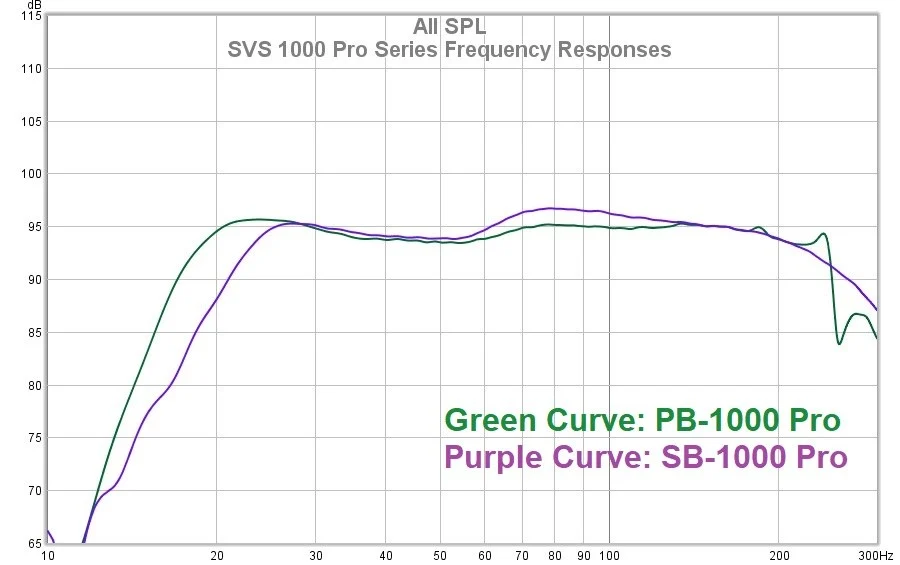
eMBe
Uczestnik-
Zawartość
813 -
Dołączył
-
Ostatnio
Informacje osobiste
-
Lokalizacja
Polska
Ostatnio na profilu byli
3 857 wyświetleń profilu
-
Dokładnie o to mi chodziło. Kierowanie się danymi producenta w sytuacji jak sub będzie stał w mieszkaniu (a nie w dedykowanym pomieszczeniu) jest po prostu naiwne. Mody pomieszczenia mogą zdemolować ten wykres nieźle. W szczególności jak ktoś nie ma zbyt wielkiego pola manewru jeśli chodzi o to gdzie sub będzie stał. Dlatego lepsze dwa (jak ktoś ma miejsce na dwa suby) :>>>
-
Nie wiem w jakich warunkach te 20Hz uzyskuje. Obstawiam że w idealnych akustycznie warunkach. Jeśli autor tematu takie ma to spoko.
-
-
To jeszcze może sprecyzujcie czy wersja SB czy wersja PB :>>>
-
Nie szczymie. Pisałem Ci w czym jest problem a Ty dalej robisz to samo. Powtórzę: "...podchodzisz do tematu zbyt pochopnie. Coś tam gdzieś przeczytałeś, ktoś doradził i kupujesz od razu. Masz sporą powierzchnię. Tu musi być coś konkretniejszego jeśli chodzi o amplituner i kolumny (głównie te z przodu, centralny jest tu ważniejszy od lewej i prawej kolumny). Suby to ja bym dał dwa a nie jeden. A jeden to na pewno nie SVS 2000 tylko co najmniej 3000 i jeśli głównie kino to w wersji PB (otwarta konstrukcja) a nie SB (zamknięta konstrukcja. Surroundy wiszą źle. No po prostu źle. Za wysoko i ten prawy powinien być jak najbliżej drzwi balkonowych. Kino domowe ma swoje zasady w celu uzyskania jak najlepszego efektu. Wiadomo że czasami nie da się idealnie z instrukcją ale też nie można robić takiej kaszany. To będzie po prostu grało nie tak jak powinno. No i też ważna sprawa. Domek spoko pewnie no ale to pomieszczenie na kino jest po prostu trudne. Akustycznie (skosy u góry, puste, płaskie powierzchnie, pogłos, odbicie dźwięku tam będzie bardzo duże). Tak samo jeśli chodzi o ustawienie surroundów ale też narożnik pod ścianą też nie pomaga. Porządnego kina domowego nie zrobisz na skróty. Szkoda kasy po prostu bo wyjdzie Ci wydmuszka a nie kino..." P.S. Suby mogą być innej firmy. Taka podpowiedź dodatkowo.
-
@ielektro.pl ja mam inną propozycję (chociaż nie wiem czy już nie za późno). Zatrzymaj się. Poczytaj trochę. Poznaj podstawy budowania kina domowego. To co Ty robisz to jakiś totalny chaos kierowany nie wiadomo czym (na pewno nie wiedzą i konkretnymi informacjami). Zakupy na szybko bez namysłu, odsłuchu. Jeśli wpadasz na pomysły żeby kolumny podłogowe stawiać na szafce albo subwoofer to o czym tu rozmawiać? Albo się powstrzymasz od tego bezmyślnego zapędu albo zbudujesz abominację kina domowego z miernym efektem brzmieniowy. P.S. A gdzie tu jeszcze temat akustyki tego pomieszczenia?
-
Poprawcie mnie jeśli się mylę. Dirac Live. Chcę wykluczyć z kalibracji subwoofer. Muszę od nowa zrobić kalibrację z wyłączonym subem? Chcę z ciekawości i nudów ustawić krzywą suba korzystając z poprzednich pomiarów Diraciem ale użyć do tego tylko apki SVS i jego DSP. O ile dobrze widzę to nie ma opcji usunięcia suba z pomiarów, filtrów jak jest zrobiony pomiar uwzględniający subwoofer.
-
Dlaczego w kinie suby bez niskiego zejścia nie mają sensu :-)
topic odpisał eMBe na tomw w Kino Domowe
Nie tak mało tych filmów co "schodzą" poniżej 20Hz. -
Dlaczego w kinie suby bez niskiego zejścia nie mają sensu :-)
topic odpisał eMBe na tomw w Kino Domowe
Zapodasz linkiem do tego wątku na avs? -
No to teraz pytanie jak to zagra u Ciebie. Warunki akustyczne zapewne inne niż w salonie gdzie robiłeś odsłuchy?
-
Wyszła nowa wersja Diraca. Sporo poprawek. Dirac Live 3.11 // 2024-11-11 Features: • Delay alignment update: The delay compensation for speaker distance alignment has previously been slightly confusing in that the shown delay values have not corresponded exactly to the measured acoustic delay. This has been due to that part of the delay alignment was included as a pre-amble of zeros in the Dirac Live filter itself, leaving only the remaining part of the alignment to be applied outside of the Dirac Live filter. A consequence of this partitioning was that if the user manually disabled the delay alignment, then the part of the delay inside the Dirac Live filters would remain being applied, resulting in a misalignment of the speakers. The new delay values more consistently represent the compensation for actual speaker distance or latency. • Target curve update: We’re unifying how the advanced target curves (breakpoint) and simple target curves (high and low shelves) behave as input to the filter design. Under the hood, shelving targets will now be converted to breakpoint targets and follow the same filter design process. • We’re introducing improvements in our measurement functionality: 1. Microphone recording level: Different microphones have resulted in different recording levels between MacOS and Windows due to different gains being applied on the microphone hardware and on the OS (operating system). For example, the UMIK-1 with USB-C connector has experienced very low recording levels on MacOS. In order to make all microphones work on all OS:s, we’re now only applying gain adjustment within the Dirac Live application. 2. Improved error detection on all platforms: An improved algorithm for detection of missing samples in the measurement recording is introduced. This will generate significantly less false alarms about measurements being “imprecise” (showing an exclamation mark). The improved algorithm will always be applied, both when using microphones connected to the AVR/receiver device and to the PC/Mac. 3. Improved recording quality on Windows: The Windows WASAPI driver will be used in Exclusive Mode by default. Exclusive Mode significantly reduces the probability for losing samples during the recording. It is possible to opt-out of Exclusive Mode by setting the environment variable: DAUDIO_WASAPI_NON_EXCLUSIVE = ON • We’ve extended the local logging from the Dirac Live, including received notifications from the connected device, to improve problem traceability. • Dirac Live 3.11 has dropped support for MacOS 10 and now only works on MacOS 11 and up. The latest release that supports MacOS 10.14 is Dirac Live 3.9.7. Bug fixes: • We have fixed an issue that caused the mic gain slider to sometimes not being shown in the Volume Calibration page. • Sometimes, a persistent error, such as an unreachable network, could generate multiple error messages. We now avoid generating identical generic error messages. • The function to reset the frequency curtains works again. • The Dirac Live application could crash when selecting Bass Control for devices from Onkyo with recently updated firmware supporting Dirac Live Bass Control. Known issues • Some users have reported that Dirac Live Bass Control does not work well on Onkyo TX-RZ50. We are investigating this together with Onkyo. • Filter export to devices from Onkyo/Integra/Pioneer take longer time than usual, but it eventually completes.
-
Kup tańszy (co nie oznacza że gorszy) tv a wydaj więcej na kino domowe (nie soundbar).
-
Bierz RZ-50 jeśli masz możliwości finansowe. Do tego zestawu brałbym coś mocniejszego niż NR7100.
-
Kolumny pasują do awatara :>>>>



